×
Save 20% On Your Purchase!
Use code SAVE20 at checkout to save on your purchase today from my Herbal Shop!
×
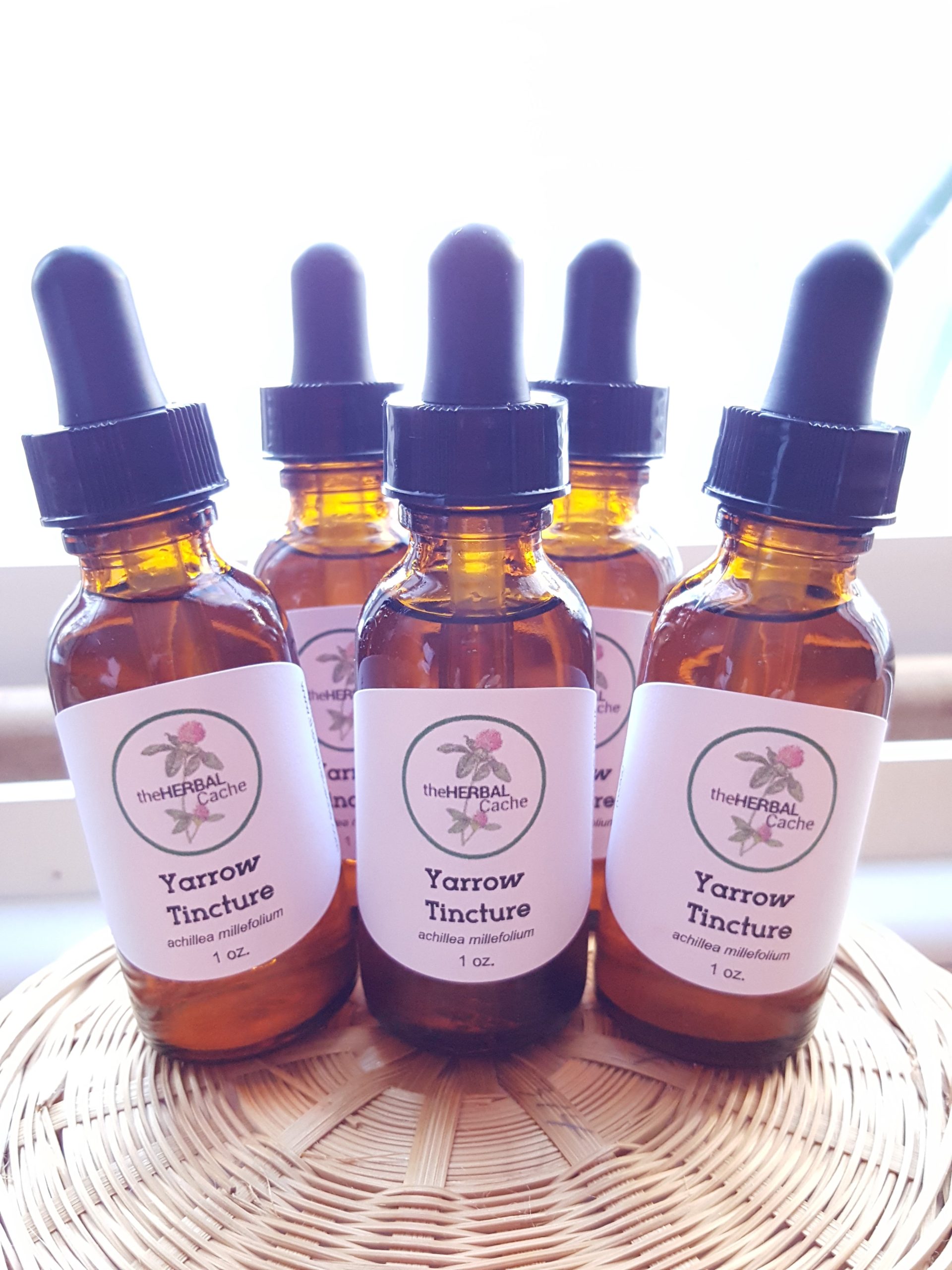
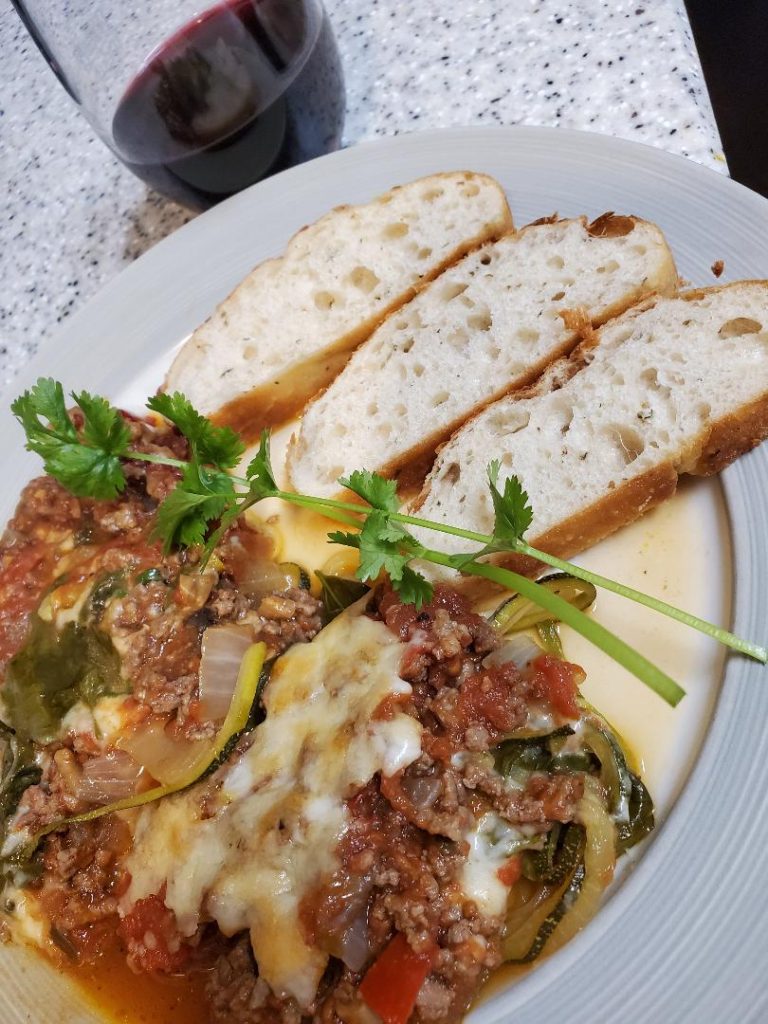
I’m the type of person who doesn’t like to waste anything I don’t have to. So when I saw all the lambs quarters in my mom’s garden that she wanted pulled out, I knew I had to step in and utilize them.
Now my mother tends a very large garden, and always has. With the help from a few of my siblings, we help plant and take care of it through the summer. Then in the fall we all benefit from our labor of love with some wonderful vegetables. This is a wonderful time for us to bond as siblings and family as well.
It is always fun to think ahead to the harvesting and canning of the delicious vegetables. Some of our favorites are making salsa with all the tomatoes and peppers and booyah, which utilizes just about every vegetable from the garden, with the addition of chicken.
Right now we are in the middle of summer and working on maintaining the garden, such as watering and weeding. Yes, I said weeding. But not just any weeding.
In this garden are many “weeds” (according to my mother), such as lambs quarters and amaranth. So instead of just pulling and tossing the weeds, I collect them. This time I collected lambs quarters for eating.
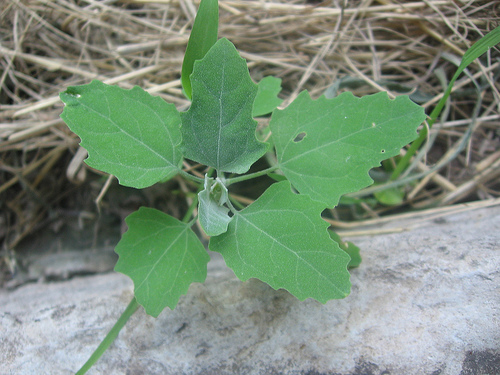
Lambs quarters, also known as wild spinach, is very nutritious and can be eaten like any other green. It is one of the most common weeds you will find in gardens and backyards.
So you definitely don’t want to toss out such a plant! Well, I least I don’t.
I took the lambs quarters I collected and created a casserole dish that is absolutely divine! And I wanted to share it with you so you can enjoy this wonderful plant too.
So the first thing you will need to do is to gather about 5-6 cups of lambs quarters leaves. If you have little ones, this would be a great way to have them help you out. They can help pick leaves for you! Once picked, rinse them and let drain.
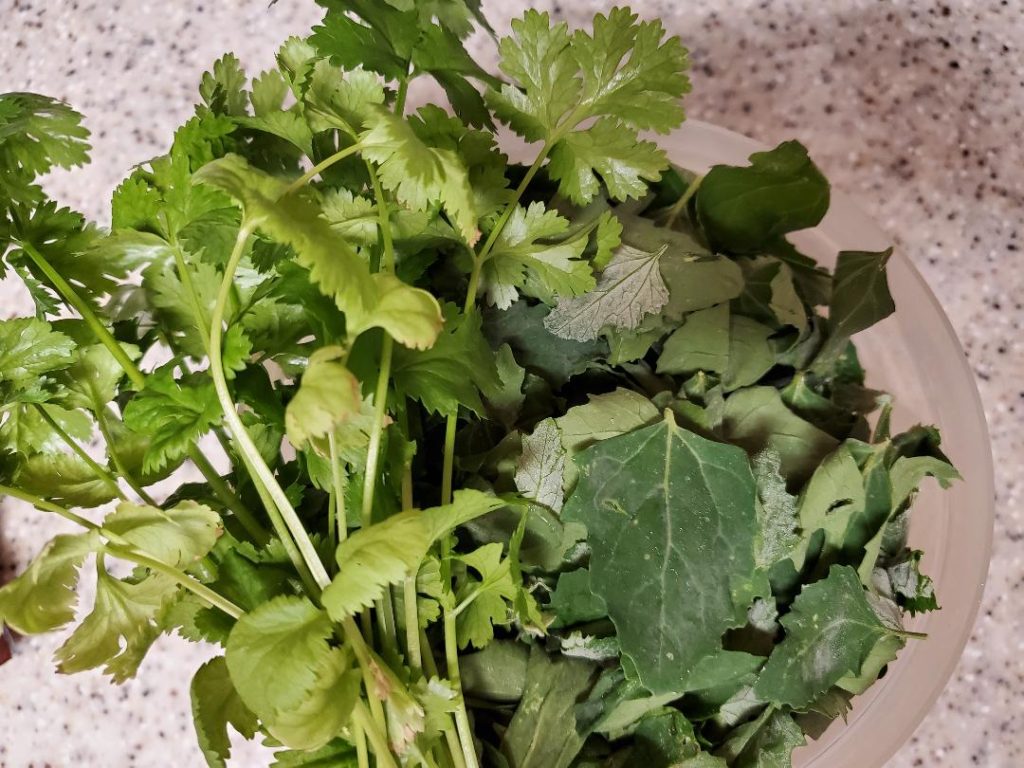
Then, over medium heat, brown the ground beef in a fry pan. I add in the onions and mushrooms when the hamburger is almost done browning. Once the onions are translucent, drain off any excess grease.
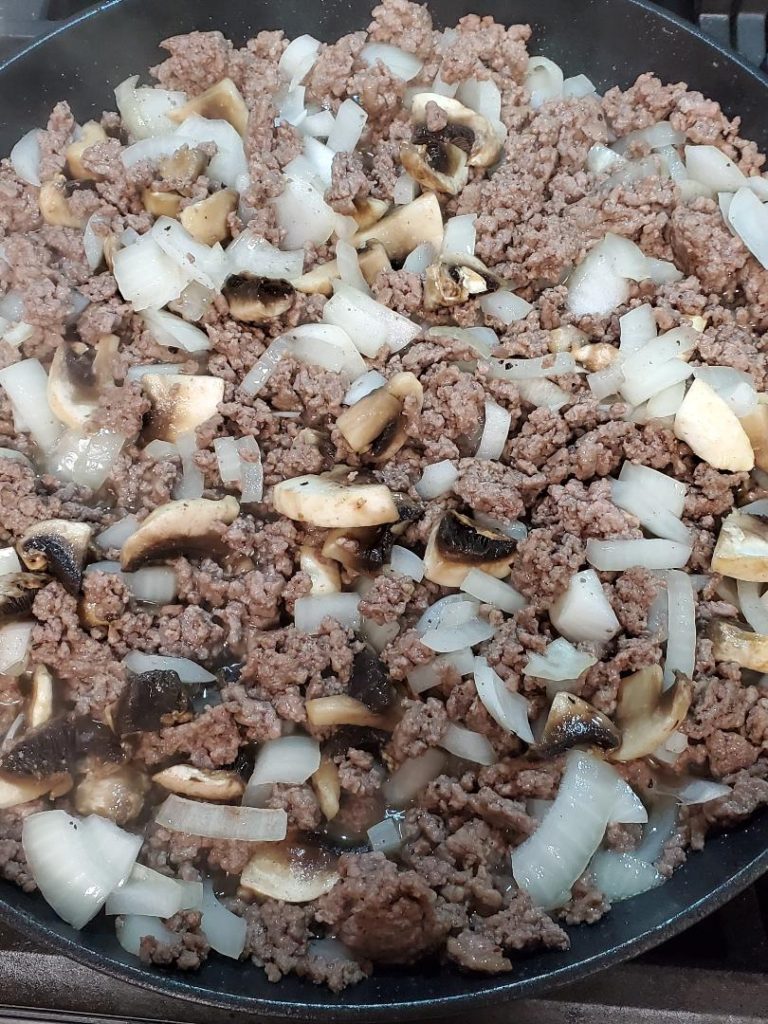
While the ground beef or hamburger is browning, you can prepare the zucchini. I like to spiralize mine. You can either buy it spiralized, or buy whole zucchini and do it yourself. I like this spiralizer. It is simple to use and cleans up nicely.
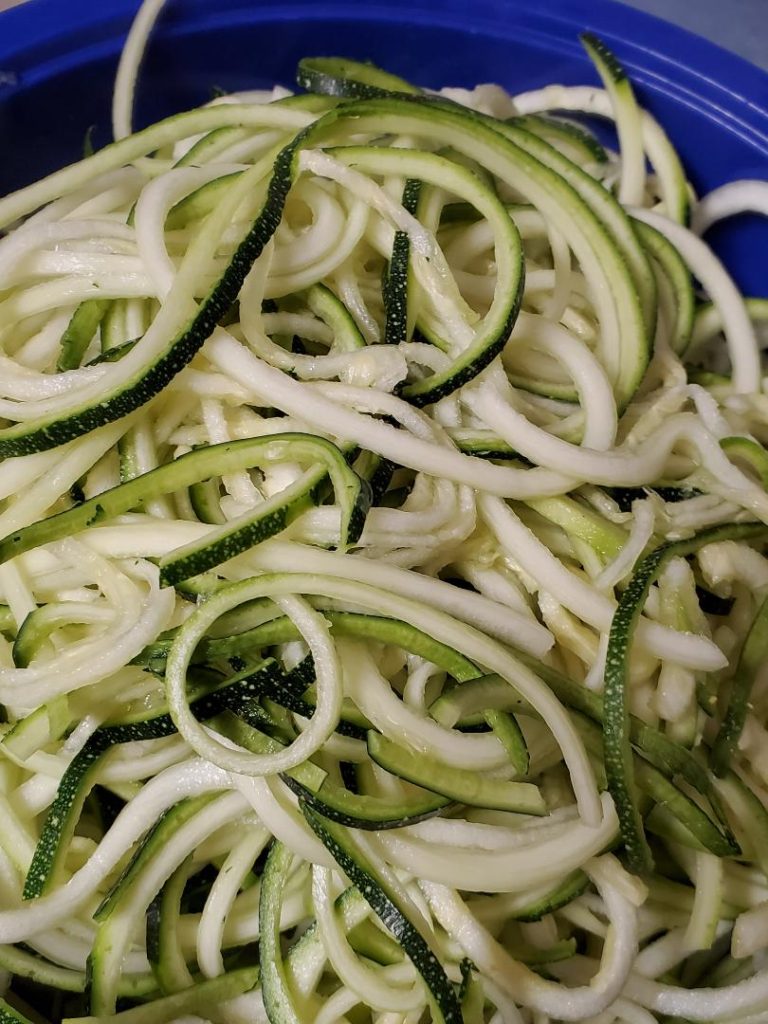
Now you can start pre-heating your oven to 350 degrees.
Once you have the ground beef browned and the zucchini prepped, it is now time to put your casserole together.
Get out a glass casserole dish or cake pan. Spread a couple scoops of spaghetti sauce on the bottom to help prevent the other ingredients from burning to the bottom. Then start layering the zucchini, ground beef, lambs quarters, cilantro, cheese and sauce.
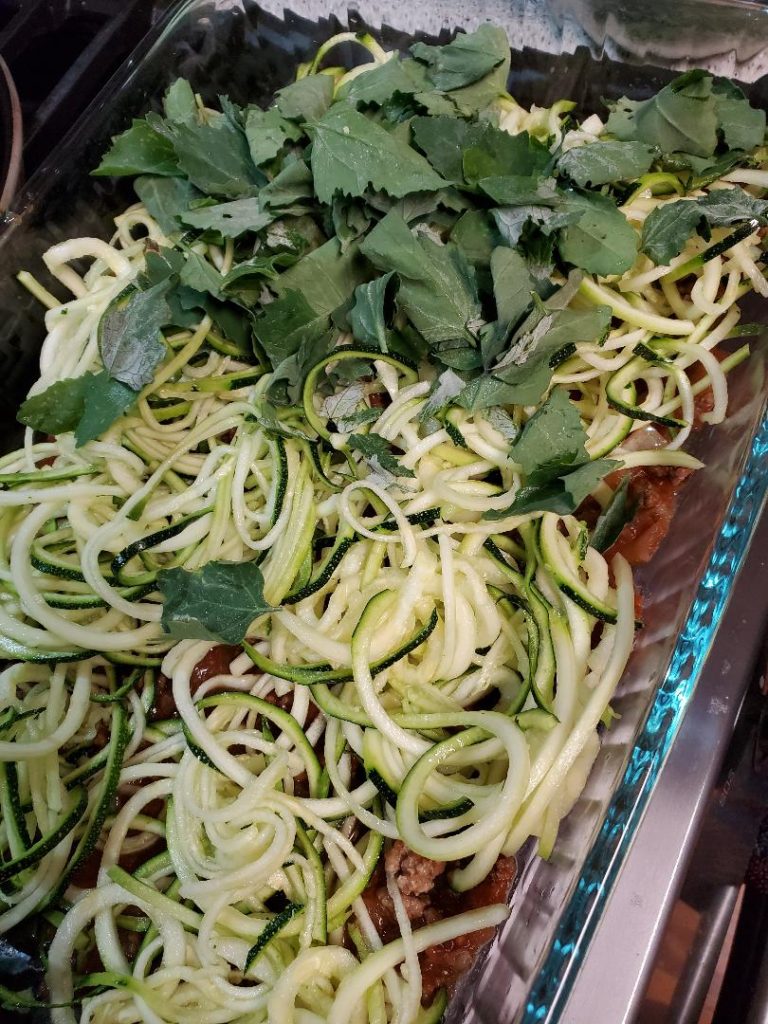
Keep layering till all ingredients are gone. Top the dish off with cheese. You can use more or less cheese, however much you prefer. I usually end up with about 2 layers of each ingredient before the pan is full.
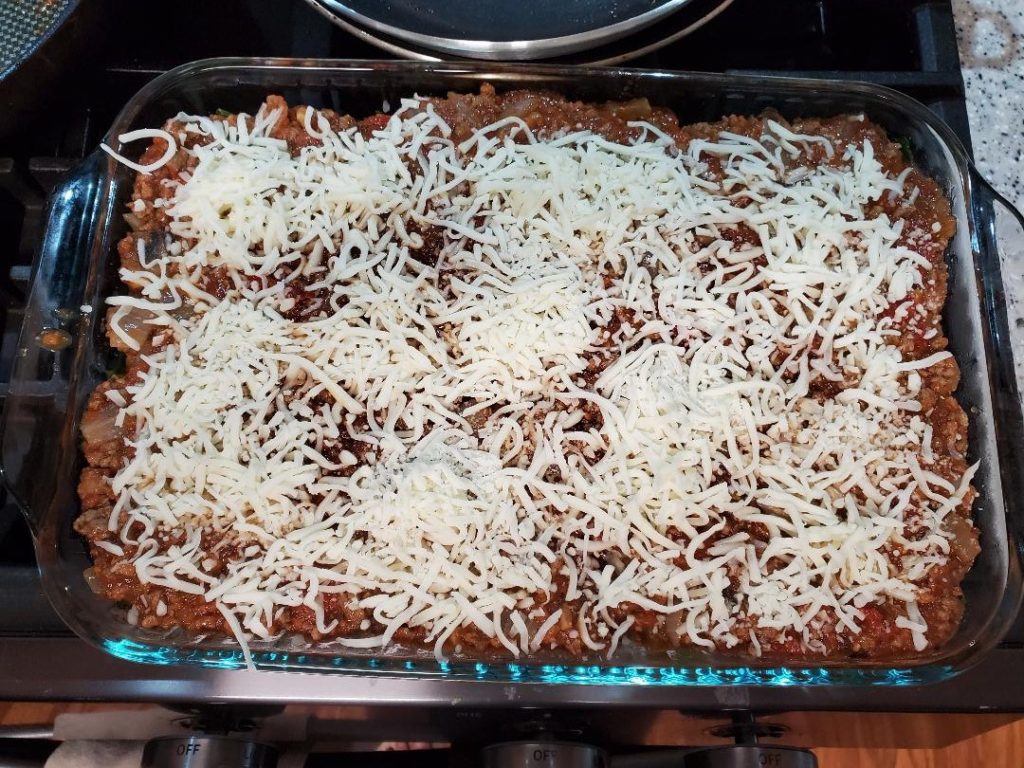
Once the oven is pre-heated to 350 degrees, put the casserole in the oven to bake for about 30-45 minutes, or until the cheese is starting to turn brown.
I serve this with some garlic bread and a side salad. It is a very nice way to enjoy an Italian style dish without the pasta and carbs.
And of course, I have to have a nice glass of red wine to accommodate the meal.
I hope you enjoy this simple and nutritious dish as much as I had fun creating it.
Bon appetit!
[recipe title=”Lambs Quarters and Zucchini Casserole” servings=”6-8″ preptime=”30 mins” cooktime=”30-45 mins” difficulty=”easy” rating=”★★★★★” image=”https://www.theherbalcache.com/wp-content/uploads/2020/06/out-of-the-oven.jpg” description=”A healthy take on lasagna without the pasta.”]
[recipe-notes]
Credit: theherbalcache.com
[/recipe-notes][recipe-ingredients]
– 1.5 lbs ground beef
– 1 medium chopped onion
– 1/2 cup mushrooms
– 2 zucchini, spiralized
– 5-6 c. fresh lambs quarters
– 1 c. chopped cilantro
– 1 jar spaghetti sauce (I like to use my homemade sauce)
– 3 c. mozzarella cheese
[/recipe-ingredients][recipe-directions]
1. Brown the ground beef; add the onion and mushrooms and cook until onions are translucent.
2. Layer the hamburger mixture, zucchini, lambs quarters, cilantro, cheese and sauce. Add another layer of cheese on top.
3. Bake at 350 degrees for about 45 minutes or until cheese starts to brown up.
[/recipe-directions][/recipe]
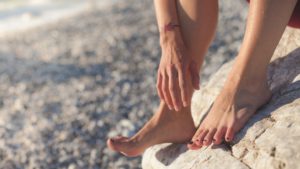
Varicose veins are part of getting older for some of us. As our bodies start taking the tole of our past years, it starts to show physically. You could say that is a sign of learned knowledge. But, for most of us, we would rather not show so many signs of getting older.
For now, lets take a look at one physical feature that many people are concerned about, and those are varicose veins. We’ll look at what they are, how they come to be and some natural ways one can try to subdue them.
Varicose veins are enlarged veins that have pushed themselves outward, just below the skin. They are most commonly found on the legs and feet, yet can affect any vein in the body.
Most are harmless. They are just a cosmetic issue for some people.
For some, varicose veins can be painful or sore. They can also cause issues for blood circulation. That can bring on swollen ankles, itchy skin and achy limbs.
Veins are continually working against the forces of gravity as they push blood back to the heart. Veins must be kept healthy and strong to maintain this level of work.
There are “valves” in the veins that push the blood back to the heart. Valves and muscles work together to get the job done. So if the muscles weaken, so do the valves.
As the valves and muscles weaken, blood starts to pool in these areas, which leads to varicose veins.
A variety of things can cause the weakening of valves and muscles. Some of those include obesity, being sedentary (which causes muscles to weaken), standing for a long period of time, pregnancy, menopause, aging, genetics and walking.
Poor blood circulation is also key in varicose veins, and a number of other health issues. Lack of concentration and low energy levels can also be due to poor blood circulation. Here is an article from The Lost Herbs, DIY Lost Circulation Booster, that can shed more light on this topic and a way to correct the issue.
The primary symptom of varicose veins is visibility. They become swollen, misshapen veins on ones legs. Some people will also have pain, heaviness and achiness near these veins.
Swelling can also occur in the lower legs and ankles after standing for periods of time.
In severe cases, the veins can bleed and ulcers may form.
According to WebMD, varicose veins can sometimes be genetic, and women are twice as likely to develop them over men.
About 23% of Americans are affected in some way.
There are a number of things a person can do to help control and lessen the issue. The Mayo Clinic suggests exercise, elevating ones legs and wearing compression stockings.
Also, losing weight or maintaining a healthy weight can help minimize or prevent them as well.
Surgery is an option for those where lifestyle changes aren’t improving the condition or there is just too much pain. More information on surgical procedures can be found here.
Using herbs and plants is another way to deal with this issue.
One can look to herbs and plants to help with varicose veins in a natural way.
A number of herbs that can be used to minimize the effects of varicose veins are known as astringents. They help by tightening the tissues and getting them back to their original state, as best they can.
Some of these herbs include:
(helichrysum italicum) is named after the golden yellow flowers of the plant, and comes from the Greek words helios meaning sun and chrysos meaning gold. A common name for it is Immortelle.
Helichrysum has many medicinal properties and is known for its restorative and rejuvenating properties. It helps heal scars and supports cell growth by encouraging the recycling of dead cells and stimulating production of new ones.
This yellow flower can also be used to help with inflammation and clears blood clots by liquefying/thinning them.
Helichrysum is an anti-oxidant as well.
(aesculus hippocastanum), also known as buckeye in some parts, or conker tree in Europe.
Horse Chestnut supports blood circulation, thus helping those with varicose veins. As an astringent, it helps to tone vein walls which, when slack or distended, may become varicose, hemorrhoidal or otherwise problematic.
Aescin, a constituent found in horse chestnuts, performs an antioxidant function and has a general vasoprotective role by protecting collagen and elastin (the two chief proteins that form the structure of veins). There are multiple clinical studies showing that horse chestnut helps in reducing inflammation, alleviating circulatory problems affecting the legs and reducing varicose veins.
You can find our more about how horse chestnuts help with varicose veins in this article, “How to Treat Varicose Veins with Chestnuts“.
(quercus alba) is a tree native to North America and was used by Native Americans for many conditions. Throughout history, it has been known as a symbol of strength and endurance.
White oak is an astringent, due to its high level of tannins, and helps with inflammation and skin conditions, such as varicose veins.
It is also an antiseptic, so helps control infection internally and externally.
White oak also contains quercetin, which helps in strengthening the capillaries and veins.
Did you know you can grind the acorns into a flour? Pretty cool!
(Salix alba) has been used medicinally for over 5000 years. It is native to Europe and Central Asia.
The bark is known as being the original pain reliever because it contains salacin, which the body converts to salicylic acid. Thus if helps reduce fevers, pain and inflammation. It takes a little longer to work, but lasts much longer then aspirin and has less side gastronomic side effects due to the large amounts of tannins that protect the stomach.
The inner and outer barks have slightly different concentrations of compounds for different ailments.
Willow bark’s high concentration of antioxidants make it very beneficial for the health of the skin. It increases blood flow to the skin, which helps to reduce wrinkles and age marks.
(Hamamelis virginiana) is a fairly common shrub found in North America. Native Americans used it to help treat skin irritations and tumors.
Witch hazel is a great skin treatment because of its astringent properties. It helps with stretch marks, wrinkles, acne, hemorrhoids and varicose veins. It is also good for itchy skin when dealing with chickenpox, eczema, bug bites and poison ivy.
Witch hazel’s ant-inflammatory properties also make it a go-to for diaper rash and sunburns. Regular application helps in healing the damaged skin quicker.
Daily use of witch hazel helps to kill bacteria living on the skin and supports cell growth. It also helps to remove excess oil from the skin.
(Achillea millefolium) originated in Europe. It can now be found in many parts of North America. The Greeks used yarrow over 3000 years ago to treat wounds. The genus name, Achillea, honors the Greek hero Achilles; who reportedly used yarrow for himself and for his soldiers as a treatment for battle wounds. Yarrow was also commonly used during the Civil War to stop wounds from bleeding.
When used topically, yarrow is wonderful for helping with skin issues, such as rashes, hemorrhoids, varicose veins or broken wounds. It supports blood circulation, reduces blood stagnation and helps to tone vein walls with its astringent properties.
Herbal Products or DIY
One can make their own creams or ointments to help with varicose veins by using some of the herbs mentioned above. One place to purchase these herbs is at Mountain Rose Herbs.
If one can’t or doesn’t have the time to make a cream or ointment, I offer a wonderful cream for varicose veins that not only helps minimize them, but softens and hydrates the skin as well.
Another way to utilize herbs in controlling or minimizing varicose veins is by using tinctures topically. Put the tincture directly on the varicose veins and let dry on the skin, or use a cloth soaked with the tincture to lay directly on the veins for a period of time.
Using this natural method will take a little bit of time to see results, so one has to be patient. It took years for the varicose veins to appear, so they won’t disappear overnight.
Don’t you love the wonderful aroma of walking through a flower garden, or the whiff of lilacs in bloom? And doesn’t the smell make you feel good and refreshed?
By using aromatherapy inhalers, you can have your favorite scents with you all the time, and receive the benefits of the essential oils used in a particular inhaler.
Depending on what you want, using different essential oils can help how you feel, lift your spirits, relax you, offer immune support, give you energy, etc…
For instance, eucalyptus and balsam fir can help with your immunity; lavender and clary sage can help with sleep, and rosemary and orange can help you focus.
There are many places to look up how each essential oil may help you. I utilize the Aromahead Blog a lot to learn about different oils and their benefits.
Aromatherapy inhalers are very simple to use. You just unscrew the cap and inhale from the tube, counting slowly as you inhale, 1, 2, 3, 4, 5. The essential oil molecules get absorbed into your bloodstream via your nasal cavity and get dispersed throughout your body.
Not only are they simple to use, but they are small enough to take with you on the go. So you never have to be without one.
You can make your own inhalers or purchase them. I personally like to make mine because then I can create my own scents with the essential oils I have. The key to that is to write down how you make it, so if you really like it, you will know how to make it next time.
If you are a DIY’er, here is a site that can help get you started on a number of different blends.
I get my blank inhalers off of eBay because I like the price, and I get an array of colors. But there are many places on the internet and in stores, where you can purchase them.
If you are not up to making your own inhalers, you can purchase them. Many natural health food stores will sell them and you can find them at my Etsy shop.
Using an inhaler is a wonderful and simple way to help you enjoy a healthier lifestyle. So go ahead, and take a deep breath!